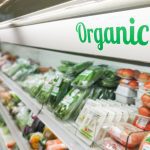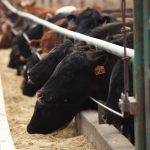
Snow and rain fall across the Prairies
Topsoil should have sufficient moisture for planting in next few weeks says analyst

Ag leader Kim McConnell honoured by Calgary business leaders

Food and beverage sales to fall in 2024; processor margins to improve
Stabilizing or declining input prices working their way through the supply chain, FCC says

Organic group send petition to federal government
Feds asked to establish policies and programs to help organic producers meet consumer demand, create sustainable food systems

U.S. cattle vets rename bovine bird-flu
CDC asks state health authorities to have plans in place to test, treat farm workers; says risk to humans still low

Feds fund agriculture and food processing robotics projects

Garden seeds lead to problem weeds
The names in the garden catalogues may sound pretty, but the plants are far from that in pastures or fields

Avian influenza detected in person exposed to dairy cattle
Alberta Milk issues new biosecurity, human safety guidelines

Cargill renews top-up payment for CRSB-certified beef

Local food system would reap big economic benefits researcher says
B.C. researchers found that the Okanagan could produce two thirds of its own food while maintaining exports


